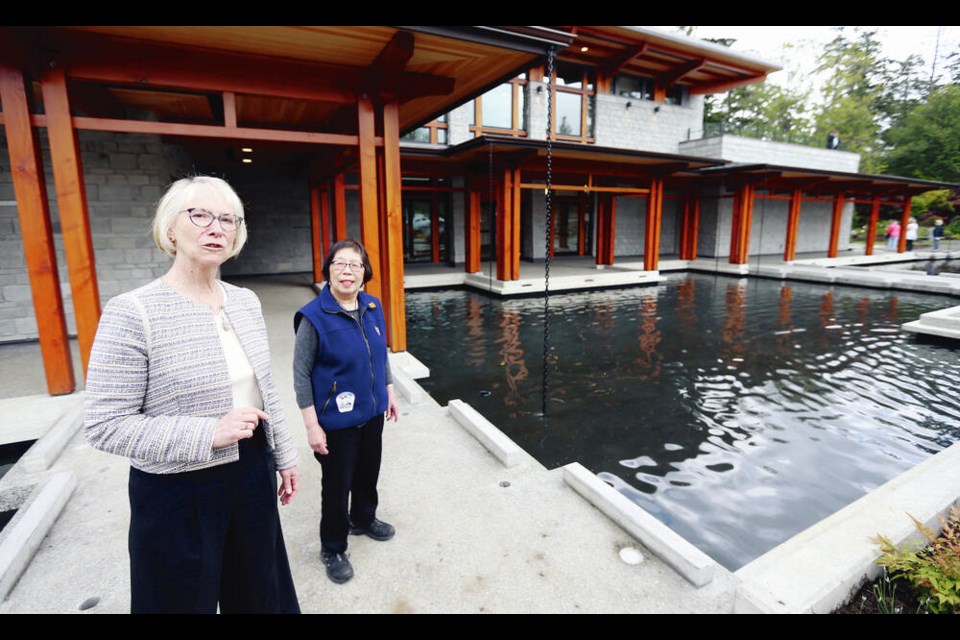The $10-million Gorge Park Pavilion set to open in Esquimalt this weekend will provide much-needed space for community programming overlooking the park’s famed Japanese Gardens, says Mayor Barb Desjardins.
The striking building covering 6,000 square feet on two floors is set up for banquets, classrooms, meeting spaces and small conferences.
The bottom floor has a large kitchen and serving area and the top floor has floor-to-ceiling windows with access to huge balconies overlooking the oldest Japanese gardens in North America and the Gorge waterway.
“It’s quite unique,” said Desjardins. “We’re excited about it because it gives our community a very special place.”
Esquimalt built the pavilion with funds it received from the Capital Regional District to build the regional sewage treatment plant in the township.
She said the pavilion building is already being booked for weddings and other events this summer and into the fall.
The park and gardens date to 1907, when B.C. Electric opened the Japanese Tea Gardens, along with an amusement park and floating sampan tearoom. It was a popular area that also featured saltwater swimming in the Gorge, with electric trams bringing people from Victoria on weekends.
The Japanese Gardens have also undergone significant improvements over the past decade, with more plants and trees, seating and a Torii gate and accessible pathways.
Last year, the township received a donation of $25,000 to create a cherry-tree forest east of the pavilion.
The forest will be made up of 28 trees, including 22 Akebono cherry trees, four weeping Japanese maples, a Japanese maple and a black pine.
The gardens immediately in front of the pavilion were designed by Esquimalt’s horticultural staff.
The pavilion, which has parking for 100, has a curved roof with 126 solar panels that are expected to produce 63,200 kilowatt-hours annually.
• To comment on this article, write a letter to the editor: [email protected]



